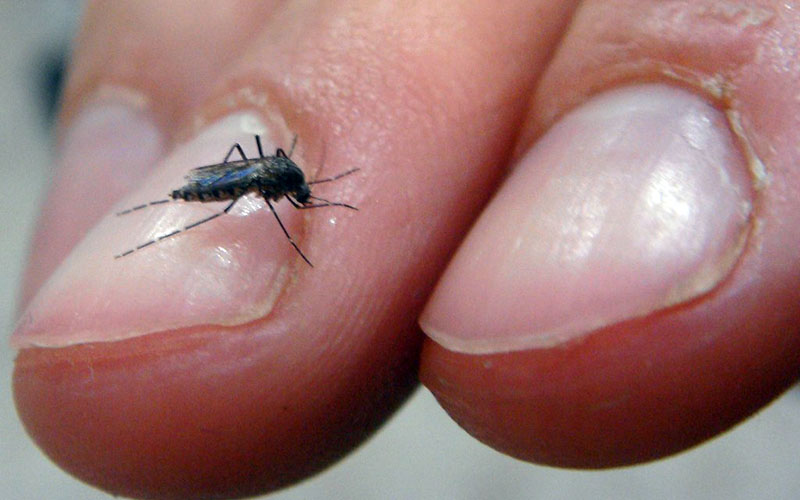In the tangled embrace of Belize’s mangrove forests lies a tiny but potent resident—the Mangrove Salt Marsh Mosquito. This unassuming insect plays a significant role in the delicate balance of these ecosystems, yet its presence also raises concerns due to its capacity as a vector for diseases like Zika and dengue. Let’s delve into the world of this buzzing menace, exploring its habitat, its role in disease transmission, and the strategies employed to manage its impact on both nature and human health.
Mangrove Havens: Understanding the Habitat of the Salt Marsh Mosquito
The mangrove forests of Belize are not just picturesque landscapes; they are complex ecosystems teeming with life, including the Mangrove Salt Marsh Mosquito (Aedes taeniorhynchus). These mosquitoes have adapted remarkably well to this unique environment, making it their haven and contributing to the intricate web of life within these coastal wetlands.
One of the key features of mangrove ecosystems that attract these mosquitoes is the brackish water found in their habitats. Unlike many mosquito species that require fresh water for breeding, the Mangrove Salt Marsh Mosquito thrives in water with varying salinity levels, which is characteristic of mangrove areas. This adaptability gives them a competitive edge in these environments, where they can breed and multiply rapidly.
The dense vegetation of mangrove forests also provides ideal resting and hiding spots for these mosquitoes during the day. The intricate root systems and tangled branches create a microclimate that offers protection from predators and harsh weather conditions, allowing the mosquitoes to conserve energy and remain active when conditions are favorable for feeding and breeding.
Furthermore, the organic matter and nutrient-rich sediment found in mangrove habitats serve as food sources for mosquito larvae, promoting their growth and development. This abundance of resources contributes to the high population density of Mangrove Salt Marsh Mosquitoes in these areas, creating a significant presence that cannot be ignored.
Despite their small size, the impact of these mosquitoes on the mangrove ecosystem is noteworthy. They serve as a vital link in the food chain, providing sustenance for various predators such as birds, bats, and fish. Additionally, their presence influences nutrient cycling and contributes to the overall biodiversity of these valuable coastal ecosystems.
Understanding the intricate relationship between the Mangrove Salt Marsh Mosquito and its habitat is essential for effective mosquito management strategies and conservation efforts in Belize’s mangrove forests.
Disease Dynamics: Exploring Zika and Dengue Transmission by the Mosquito
The role of the Mangrove Salt Marsh Mosquito extends beyond its ecological significance; it also has a profound impact on public health as a vector for diseases such as Zika and dengue. These diseases, transmitted by the bite of infected mosquitoes, have raised concerns globally, emphasizing the importance of understanding the dynamics of disease transmission in mangrove ecosystems.
Zika virus, a relatively recent addition to the list of mosquito-borne diseases, gained widespread attention due to its association with birth defects and neurological complications. The Mangrove Salt Marsh Mosquito has been identified as one of the primary vectors of Zika virus in coastal regions, including Belize. Their preference for brackish water and their adaptability to diverse environmental conditions make them efficient carriers of this virus, posing a significant risk to human populations living near mangrove habitats.
Similarly, dengue fever, caused by the dengue virus transmitted by Aedes mosquitoes, is another concern associated with the Mangrove Salt Marsh Mosquito. Dengue outbreaks have been reported in Belize and other tropical regions, highlighting the role of these mosquitoes in spreading the disease. The ability of these mosquitoes to breed in small pockets of water and their propensity for urban areas further exacerbate the risk of dengue transmission, especially in communities adjacent to mangrove forests.
The transmission dynamics of Zika and dengue involve a complex interplay between the mosquitoes, the viruses they carry, and human activities that influence mosquito populations and disease spread. Factors such as climate change, land use practices, and socio-economic conditions can impact the prevalence and distribution of these diseases, emphasizing the need for integrated approaches to disease prevention and control.
Efforts to mitigate the impact of Zika, dengue, and other mosquito-borne diseases in Belize’s mangrove ecosystems require a multi-faceted approach, including vector control measures, community engagement, and research into novel strategies for mosquito management and disease prevention.
Managing the Menace: Strategies for Mosquito Control in Mangrove Ecosystems
Controlling the population of Mangrove Salt Marsh Mosquitoes in Belize’s mangrove ecosystems is a multifaceted challenge that requires a combination of proactive measures and innovative strategies. Given their adaptability and the complex nature of mangrove habitats, traditional mosquito control methods may not always be effective, necessitating a holistic approach to managing this buzzing menace.
One of the primary strategies for mosquito control in mangrove ecosystems is habitat modification. This approach involves altering the environment to make it less hospitable for mosquito breeding and resting. For example, removing or modifying natural and artificial containers that collect water, such as discarded tires and containers, can reduce breeding sites for mosquitoes. Additionally, improving drainage systems and reducing standing water can limit mosquito populations in mangrove areas.
Biological control methods also play a crucial role in managing mosquito populations in mangrove ecosystems. This includes the introduction of natural predators of mosquitoes, such as certain species of fish and crustaceans, that can feed on mosquito larvae and reduce their numbers. Biological larvicides derived from bacteria or fungi are another eco-friendly option for controlling mosquito larvae in mangrove habitats without harming other organisms.
Furthermore, integrated pest management (IPM) approaches combine multiple control methods to achieve sustainable mosquito control in mangrove ecosystems. IPM strategies may include the use of insect growth regulators to disrupt mosquito development, targeted application of pesticides in areas with high mosquito populations, and community-based initiatives for mosquito surveillance and control.
Community involvement and education are also integral components of effective mosquito control in mangrove ecosystems. Engaging local communities in mosquito monitoring, habitat cleanup campaigns, and promoting personal protective measures, such as using mosquito nets and repellents, can enhance the overall success of mosquito control efforts while fostering a sense of ownership and responsibility among residents.
By implementing a comprehensive and adaptive approach to mosquito control, Belize can better manage the impact of the Mangrove Salt Marsh Mosquito on both the environment and public health, ensuring a harmonious coexistence between humans and nature in these vital coastal ecosystems.
Final Thoughts
The Mangrove Salt Marsh Mosquito embodies the intricate interplay between nature, public health, and human activities in Belize’s mangrove ecosystems. As we conclude our exploration of this buzzing menace, several key insights emerge regarding its significance and the strategies employed for its management.
Firstly, the adaptability of the Mangrove Salt Marsh Mosquito to thrive in brackish water and its ability to exploit diverse habitats within mangrove forests underscore the importance of understanding its ecological niche. This knowledge is crucial for implementing targeted and effective mosquito control measures that minimize environmental impacts while mitigating public health risks.
Secondly, the role of this mosquito as a vector for diseases like Zika and dengue highlights the interconnectedness of ecosystem health and human well-being. Managing mosquito populations in mangrove ecosystems requires a holistic approach that integrates habitat modification, biological control methods, and community engagement to achieve sustainable results.
Thirdly, the dynamic nature of mosquito-borne disease transmission underscores the need for adaptive and innovative strategies in mosquito control. By embracing integrated pest management approaches, leveraging biological control agents, and promoting community participation in mosquito surveillance and prevention, Belize can enhance its resilience against mosquito-borne diseases while conserving its valuable mangrove ecosystems.
In conclusion, navigating the complexities of the Mangrove Salt Marsh Mosquito in Belize’s mangrove forests requires a collaborative effort that bridges ecological conservation, public health, and community empowerment. By fostering a deeper understanding of this buzzing menace and implementing strategic interventions, Belize can chart a path towards coexisting harmoniously with nature while safeguarding human health in these vital coastal environments.




